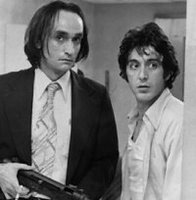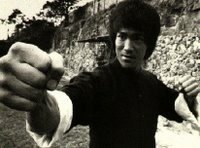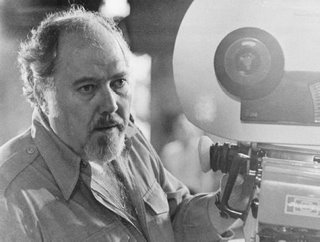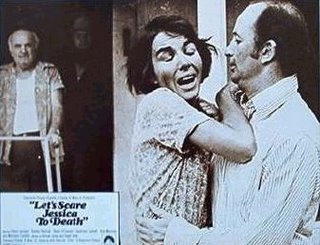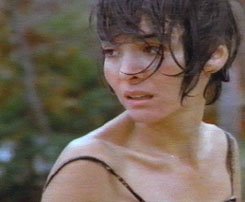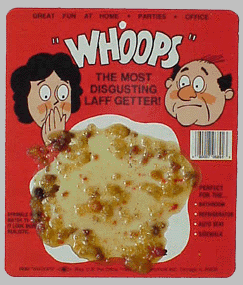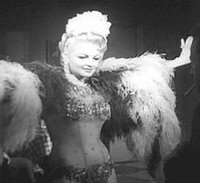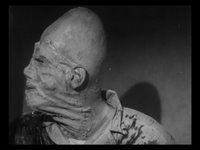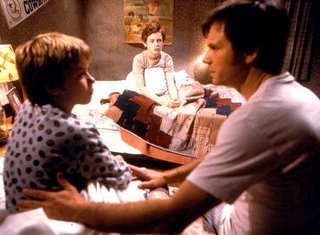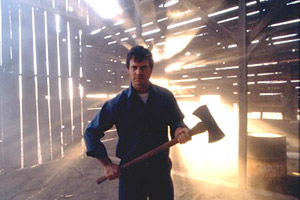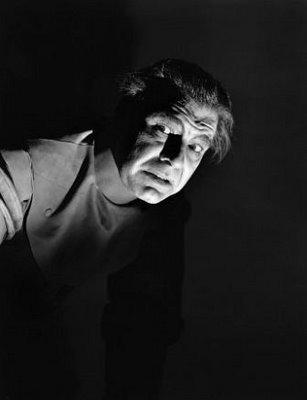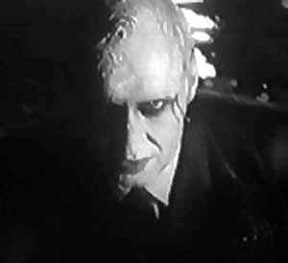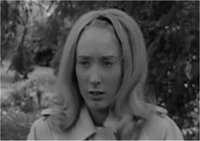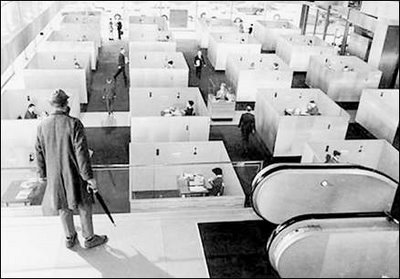
I've been away--Christmas-time at my house is full and grinning, like Dickens' second Ghost--and maybe with those scary children clinging to its ankles; but we're too busy cooking and making music and grading papers and getting it all done so we can do it* to notice our Ignorance and Want. All we see is light and expectation. Then we get sick--this year, a stomach flu coursing like reindeer for twenty-four hours straight through us, no waiting (and I cannot resist: all things must pass)--then bang! it's gone and we're hungry again, but never again for what we ate at Christmas. (Without a keen--and forgiving--sense of irony, one can neither believe in nor put up with God and His little jokes.) But I'm back again, just for a word or two, then gone for a few days. I think.
 I'm finally getting the true grownup present--you know, the good feeling of giving things to other people; that gift, and no kidding. But I am also blessed with children who know me well, and one gave me a remarkable Springsteen book, more like a museum installment, packed with photos and removable inserts and reproductions of tickets and backstage passes and programs. A Compleatist Fan's scrapbook. And another gave me Tom Waits' Orphans, three dreamy, spinning discs of "Brawlers, Bawlers, and Bastards." And listening to them--some "Bastards" first, now "Bawlers"--led me here, ruminative at the tail-end of the year, with James Brown, Gerald Ford, and Saddam Hussein suddenly now, if I can say it, the same. You may not agree that we are all guilty of everything--and I'll admit that sometimes I'm not sure what Dostoyevsky and I mean by that assertion of not-so-original sin--and you may yourself assert that one should not derive moral equivalencies too hastily, but some equivalencies are more equivalent than others, and looking back over the past few queasy days I'm not sure if I see Soul Brother Number One's white-horse ride to the Apollo, or hear Ford's artillery, or Saddam's--what? I didn't wait around to see if they really would air his execution--CNN and Fox were both promising it, there in the watches of the blue-glow TV night; all I have in my head are those wide-eyed shots of him, looking a bit perplexed, a bit angry, sometimes with his (rueful? exasperated?) hand alongside his cheek, an opposite-number Jack Benny--to be or not to be, with a (literal) vengeance--almost as if he were unsure exactly what all the fuss was about: After all, God is great, and what can happen as long as the cameras are rolling?
I'm finally getting the true grownup present--you know, the good feeling of giving things to other people; that gift, and no kidding. But I am also blessed with children who know me well, and one gave me a remarkable Springsteen book, more like a museum installment, packed with photos and removable inserts and reproductions of tickets and backstage passes and programs. A Compleatist Fan's scrapbook. And another gave me Tom Waits' Orphans, three dreamy, spinning discs of "Brawlers, Bawlers, and Bastards." And listening to them--some "Bastards" first, now "Bawlers"--led me here, ruminative at the tail-end of the year, with James Brown, Gerald Ford, and Saddam Hussein suddenly now, if I can say it, the same. You may not agree that we are all guilty of everything--and I'll admit that sometimes I'm not sure what Dostoyevsky and I mean by that assertion of not-so-original sin--and you may yourself assert that one should not derive moral equivalencies too hastily, but some equivalencies are more equivalent than others, and looking back over the past few queasy days I'm not sure if I see Soul Brother Number One's white-horse ride to the Apollo, or hear Ford's artillery, or Saddam's--what? I didn't wait around to see if they really would air his execution--CNN and Fox were both promising it, there in the watches of the blue-glow TV night; all I have in my head are those wide-eyed shots of him, looking a bit perplexed, a bit angry, sometimes with his (rueful? exasperated?) hand alongside his cheek, an opposite-number Jack Benny--to be or not to be, with a (literal) vengeance--almost as if he were unsure exactly what all the fuss was about: After all, God is great, and what can happen as long as the cameras are rolling?  So here I am, driven by the sentimental confluence of Waits' growl and the flu and other ailment recoveries and onsets while the year wanes and the Way of All Flesh works its lasting charms on the good, the bad, and the ugly. Tom just sang, "There's somethin' to be said for sayin' nothin' at all." An easy exit cue, one I'm willing to follow, "down there by the train." Happy New Year, then; one more swift digit further up the twenty-first century.
So here I am, driven by the sentimental confluence of Waits' growl and the flu and other ailment recoveries and onsets while the year wanes and the Way of All Flesh works its lasting charms on the good, the bad, and the ugly. Tom just sang, "There's somethin' to be said for sayin' nothin' at all." An easy exit cue, one I'm willing to follow, "down there by the train." Happy New Year, then; one more swift digit further up the twenty-first century. *And OK, watching movies; but kiddies, I gotta finish the Halloween Roundup (and imagine that: You had simply to read those words; I had to write them) before I can parade through the Christmas Cavalcade.
*And OK, watching movies; but kiddies, I gotta finish the Halloween Roundup (and imagine that: You had simply to read those words; I had to write them) before I can parade through the Christmas Cavalcade.










